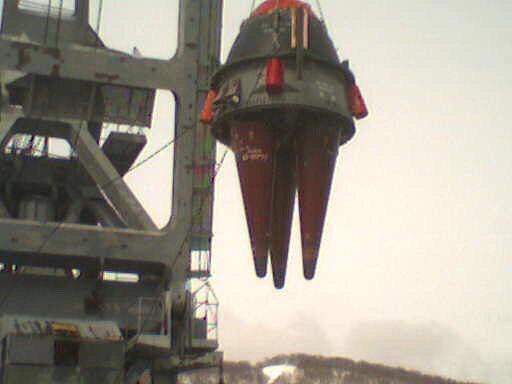Greater range, throw weight and greater number of deployed missiles are invariant advantages. Arguing they have no meaning is like
saying that sticks and stones are good enough in the face of Maxim guns.
Liquid fuelled rocket engines are more powerful, which makes better range, better throw weight, and increased warhead payloads easier to achieve.
I am not saying such things don't have meaning, what I am saying is that Bulava was design to do a job... has that job changed?
Russian ports have not moved further away from their targets in the US, so I suspect it is more likely they want more warheads, or different glider warheads, or perhaps... as I said... for their warheads to head in the opposite direction and instead of coming at the US over the north pole, to come over the south pole by entering earth orbit and then deorbiting... something that was previously not allowed because of the ABM treaty that covered anti satellite weapons and anti ballistic missiles and of course fractional orbital bombardment systems... but that treaty was ripped up by the US...
It is ironic that the country that fields the most powerful land based ICBM can't even match the number of SLBMs deployed by the USA
and has a weaker variant.
Not ironic at all... once the silos are built they are much easier to defend and much cheaper to operate than any sub, and together with mobile truck based systems and perhaps rail mounted systems they are just as elusive... and require very little launch warning to get their missiles in the air.
The deciders who chose 16 tubes instead of 20 for Russian strategic nuclear submarines must have been
subconsciously sabotaging Russian interests at the very least. Putting more tubes in a large submarine is almost a no brainer.
Right now, you are correct, but when these vessels were designed there was such a thing as START II in place, and then New START which limited each side to 1,550 warheads... having 20 missiles in each sub just means you are allowed fewer subs... how is that a good thing?
Having really really big subs is not a great idea... the Akula SSBNs were unique and their ability to surface through 3m of ice and their high freeboard meaning when surfaced there wasn't really much hanging under the ice for a torpedo to hit... for most ice more than 3/4s is under water with bits hanging down making torpedo shots even less effective over any distance.
But Akulas are expensive and huge... Borei is much smaller and just as deadly... with START II gone they could adapt the Bulava to carry enormous numbers of warheads in a fractional orbital bombardment flight profile that could attack the US from any direction...
But as it stands, ignoring the differences in SLBMs, every 10 Ohio subs are worth 15 Russian subs of the same category. Russia's
strategic nuclear submarine fleet numbers are not so large as to justify such a large gap.
SLBMs are important and effective, but it is cheaper to make lots of IRBMs to hit Europe and Israel and Japan, and use ICBMs on trucks and trains for the US...
Inform the Americans that they too are sabotaging themselves, Columbia has 16 tubes.
When playing hide and seek with guns it makes more sense to have more players carrying less ammo than one player carrying all the ammo... smaller and lighter is easier to hide and cheaper to operate.
Now that there are no strategic arms agreements going to be working after 2021 then you could build some very interesting subs... imagine a single warhead scramjet missile that gets itself into orbit the size of a cruise missile with 200 on each sub...





